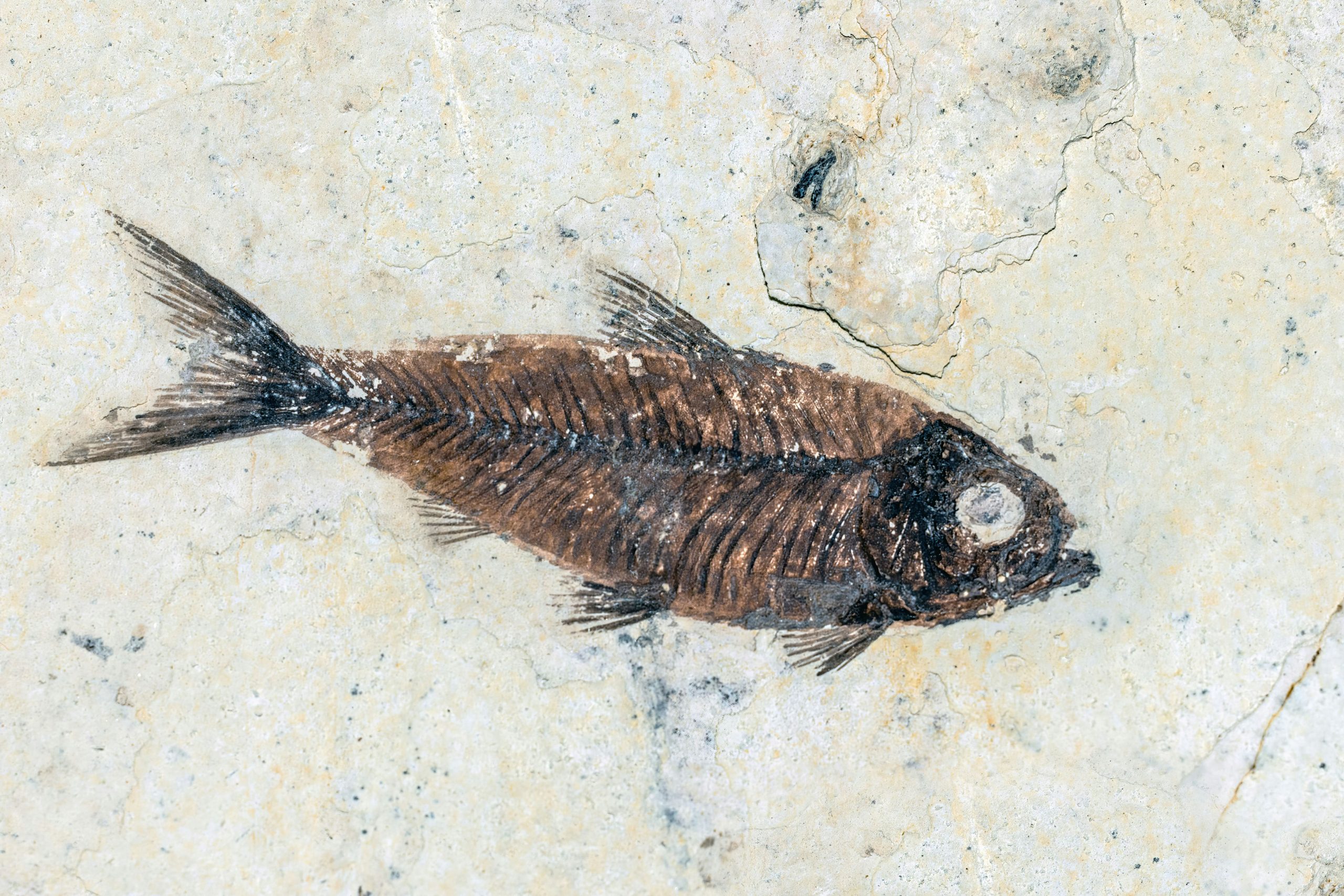How can the past help our future? Photo credit: David Clode via Unsplash
For many, palaeontology conjures memories of touring natural history museums and watching nostalgic dinosaur franchises. However, the field spans far beyond the T. Rex and Jurassic Period. In fact, many leading palaeontologists are conservationists. Conservation palaeontology is an interdisciplinary field combining geology, chemistry, biodiversity, and more. By studying the past, these researchers hope to inform policy for present and future ecosystem changes.
Conservation palaeontology is an interdisciplinary field combining geology, chemistry, biodiversity, and more.
History Repeats Itself: why use palaeontology?
Using the past might not seem intuitive for modern-day conservation, but many ancient organisms can still be found today. If something from the past is preserved, be it biotic or abiotic, a palaeontologist can record it. The summation of these findings is known as the fossil record, a time capsule for a world that once was.
If something from the past is preserved, be it biotic or abiotic, a palaeontologist can record it.
Palaeontologists use the fossil record to infer ancient migration, evolution, climate change and more. For example, palaeontologists determined which traits are sensitive to climate change by tracking taxonomic families over 541 million years. Researchers can use these findings to hypothesise how current communities will respond to climate change. The Intergovernmental Panel on Climate Change (IPCC) has cited several papers from the fossil record, suggesting conservation palaeontology has relevance for informing policy.
The Sixth Mass Extinction: how do we define it?
Many researchers concur we are in the “sixth mass extinction.” This concept is the topic of the Pulitzer Prize winning book, The Sixth Extinction, which examines the alarming trend of biodiversity decreasing due to anthropogenic factors. But we take this term for granted. What is a mass extinction, and why is this the sixth?
What is a mass extinction, and why is this the sixth?
The first five mass extinctions (colloquially known as “the big five”) were defined using palaeontology. In 1982, David Raup and John Sepkoski, Jr. published Mass Extinctions in the Marine Fossil Record. Raup and Sepkoski calculated the extinction rates of marine organisms over the last 541 million years and noticed five intervals in the fossil record where extinction rates were higher than expected: the end-Ordovician, end-Devonian, end-Permian, end-Triassic, and end-Cretaceous. While extinction is inevitable throughout time, this landmark paper provided key intervals of mass extinctions, ultimately leading to the coining of “sixth mass extinction.”
Similar to today, there is evidence that some extinction crises occurred during ocean acidification events. Organisms like corals and bivalves are sensitive to high ocean acidity because their shells and skeletal structures weaken at lower pH levels. After studying 541 million years of coral data, researchers determined four out of five reef crises are at least partly linked to ocean acidification. Although no perfect analogue exists between current and ancient ocean acidification events, quantifying biodiversity changes highlights vulnerable marine populations.
Similar to today, there is evidence that some extinction crises occurred during ocean acidification events
The Recent Past: how do we study it?
While long-term global studies define major shifts in Earth’s history, looking at the last 30 million years may be of more interest for current conservation efforts. Research suggests geographic- and trait-based patterns in marine ecosystems have been consistent over the last 23 million years. Marine organisms with a broad habitat range and fast reproduction rates are more likely to adapt and migrate during ocean warming. Since past and present marine clades share similar extinction risks, conservation decisions must be informed by the fossil record.
However, there is not a way to directly compare current and ancient warming rates currently. To circumvent this, palaeontologists instead compare similar warming magnitudes. For example, the Middle Miocene Climate Optimum (~16 million years ago) is the last time interval that matches concentrations of current atmospheric carbon dioxide. Since the Middle Miocene falls within the last 30 million years, researchers can more easily compare current and past biodiversity. These similarities provide a baseline for ecosystems right before human-environment interactions.
Conservation efforts often use ecosystem baselines to determine how the landscape has changed. The past provides insights into a landscape’s baseline. Specifically, the fossil record elucidates how marine ecosystems changed with human settlement. Retroactively monitoring anthropogenic changes is especially useful in areas where historical records are limited. For example, researchers used palaeontology and archaeology to understand human impacts on North America’s Chesapeake Bay. Their findings highlighted the sustainability of Native American harvest practices, suggesting future land management efforts should use traditional ecological knowledge.
Coral reefs are of interest for baseline studies since they are marine biodiversity hotspots that are vulnerable to ocean changes. For example, corals were affected by European colonization in Belize. By using fish teeth from the fossil record, researchers linked a rise in European settlements with a decline in parrot fish. This coincided with a decline in coral reefs, which may be explained by the importance of parrotfish in a coral reef ecosystem. Studies like this reaffirm the impacts of humans on the environment, but they also highlight the importance of community structure. As some organisms migrate to the poles to escape ocean warming, some community interactions are bound to be lost due to different natural history patterns. Future research should focus on how these changes in communities may impact future biodiversity and extinctions.
Baseline Restoration: how can we approach it?
Not all landscapes are created equal. This is highlighted with turbidity levels in coral reefs. Turbidity is the measurement of suspended particles in the water. In Singapore, turbid reefs are anthropogenically induced. Potential causes are coastal developments, agricultural runoff, ship traffic and more. However, some turbid reefs are naturally occurring. According to the fossil record, the coral reefs of Paluma Shoals have lived in turbid ecosystems since before human settlement. Moreover, many coral reef ecosystems thrive in low light environments. While general practices for land management are important, we must also acknowledge the uniqueness of each ecosystem. Therefore, restoration should focus on the local level. By using palaeontology to establish a baseline, conservationists can implement preservation and restoration strategies that promote the specific ecosystem’s needs.
With the climate emergency upon us, many palaeontologists are pivoting towards conservation.
The Future of the Past: what happens now?
With the climate emergency upon us, many palaeontologists are pivoting towards conservation. The fossil record provides unique insights into human-environment interactions, and palaeontologists can address priority conservation questions pertaining to climate change and marine ecosystems. Conservation palaeontology is especially useful for locations with little to no historical records. Baselines for seemingly similar habitats can vary, and local conservation efforts should use the fossil record to determine optimal conditions for individual ecosystems. Such findings can inform local communities, IPCC reports, and public policy.





